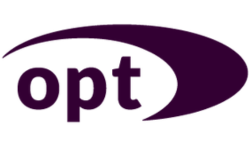In today’s evolving workplace, inclusivity goes beyond gender, race, and age—it also includes how people think, learn and process information. Neurodiversity refers to the natural variation in human brain function, encompassing conditions like autism, ADHD, dyslexia, dyspraxia and more. Rather than viewing these differences as deficits, a growing number of organisations are recognising the value neurodivergent individuals bring to teams—innovation, pattern recognition, creativity and resilience among them.
But to truly support neurodiverse employees, businesses must go beyond token policies and build environments where everyone can thrive.
What is Neurodiversity?
Neurodiversity is the idea that neurological differences are part of the normal variation of the human genome. Common neurodivergent conditions include:
- Autism Spectrum Disorder (ASD)
- Attention Deficit Hyperactivity Disorder (ADHD)
- Dyslexia and Dyscalculia
- Tourette Syndrome
- Sensory Processing Disorder
Each presents unique ways of thinking and working—often misunderstood in traditional workplace setups.
Barriers Neurodivergent Employees Face
Despite the value they offer, many neurodivergent individuals experience:
- Stigma and misunderstanding
- Inflexible recruitment processes
- Poorly designed workspaces (e.g. noisy, overstimulating)
- Lack of tailored support or reasonable adjustments
How to Create a Neuro-inclusive Workplace
1. Rethink Recruitment
- Use clear, plain language in job descriptions.
- Offer alternatives to traditional interviews (e.g. skills-based tasks, video responses).
- Let candidates choose how they’d like to communicate.
2. Design Sensory-Friendly Workspaces
- Create quiet zones or noise-controlled areas.
- Offer flexible seating, lighting and tech setups.
- Allow remote or hybrid options where possible.
3. Educate and Train Staff
- Provide neurodiversity awareness training for HR, managers, and teams.
- Highlight strengths-based approaches—not just ‘challenges’.
4. Build Supportive Policies
- Have clear, flexible procedures for requesting adjustments.
- Include neurodiversity in your EDI (Equality, Diversity & Inclusion) strategy.
- Celebrate neurodivergent voices—through internal campaigns, events, or employee stories.
5. Foster Psychological Safety
- Encourage open dialogue and feedback.
- Build a culture where different ways of thinking are respected, not side-lined.
Final Thoughts
Embracing neurodiversity isn’t just a moral imperative—it’s a smart, strategic move. Organisations that build inclusive environments benefit from greater innovation, increased staff retention, and more resilient teams. But getting inclusion right requires more than good intentions—it takes the right tools, training, and ongoing support.
How The Opt Workforce Builder® Can Help
At Opt for Learning, The Workforce Builder is designed to support organisations in creating neuro-inclusive, high-performing teams. From bespoke training Modules to workplace audits, they help you:
- Understand and apply inclusive recruitment practices
- Create supportive workplace cultures
- Build confidence in line managers and HR teams
- Develop policies that truly reflect diverse needs
Whether you’re just starting your inclusion journey or refining your current strategy, The Opt Workforce Builder® offers tailored support to help you make lasting change.
Ready to build a more inclusive workplace?
Explore The Opt Workforce Builder or get in touch to see how it can work for your team.


